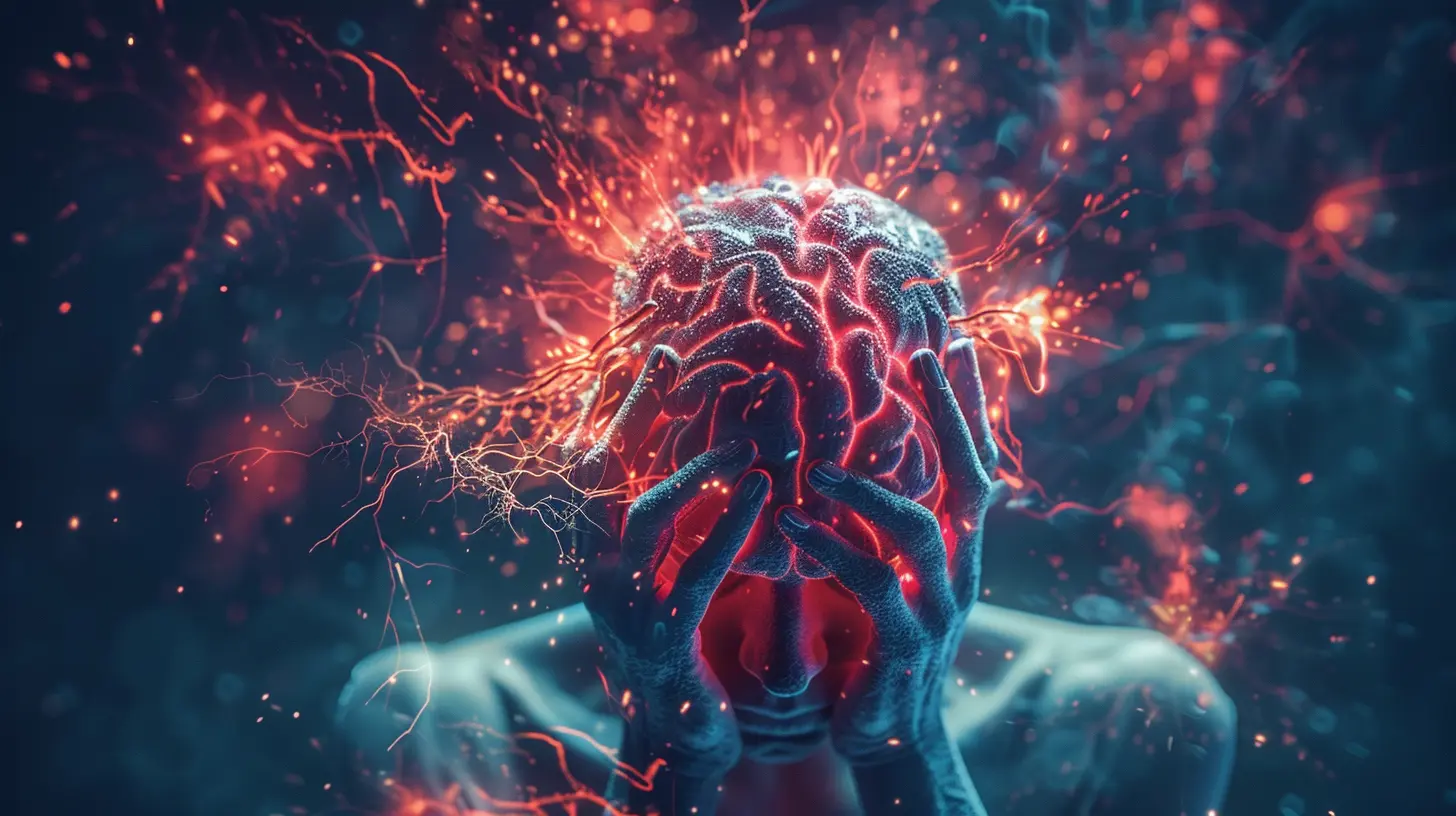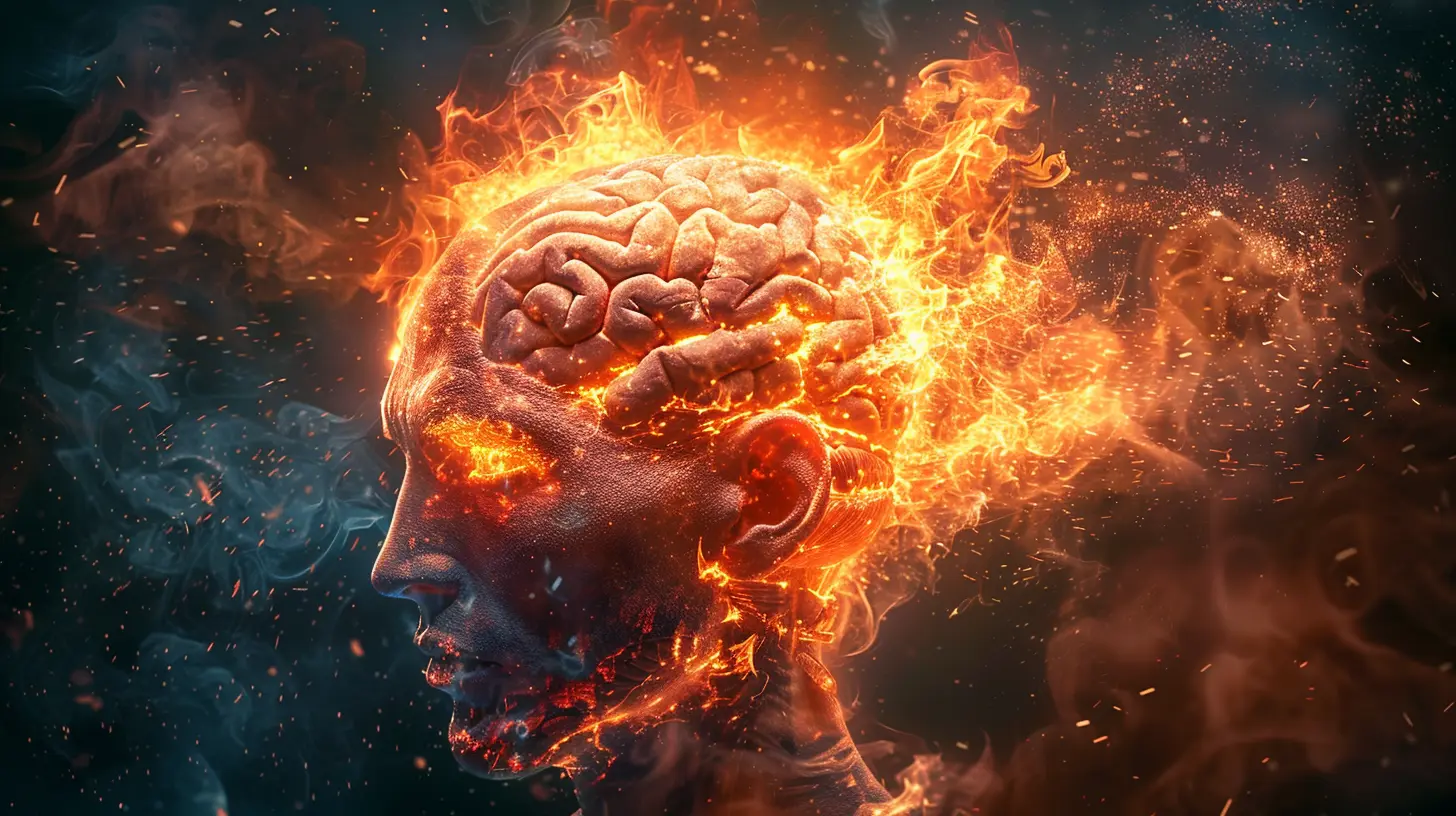The Amygdala and Fear: How the Brain Responds to Threats
25 May 2025
Have you ever felt your heart race, palms sweat, or muscles tense up when faced with a stressful situation? Maybe it was a shadowy figure in a dark alley or a sudden loud noise. That intense feeling of fear isn’t just in your head—well, actually, it is. It all comes down to a tiny but powerful part of the brain called the amygdala.
But how does this small structure orchestrate the entire fear response? And why does it sometimes overreact or trigger anxiety? Let’s dive deep into how the amygdala processes threats and why it plays such a crucial role in our survival.

What is the Amygdala?
The amygdala is a small, almond-shaped structure located deep within the brain’s temporal lobe. Despite its size, it has an enormous impact on our emotions, especially fear. It acts like the brain’s security system—constantly scanning the environment for possible threats and deciding how we should react.Ever heard of the "fight-or-flight" response? That’s the amygdala at work. The moment it detects danger, it sends signals to other parts of the brain and body, triggering a chain reaction that helps us either confront the threat or run for safety.
The Role of the Amygdala in Fear
The amygdala isn’t just responsible for fear—it’s also involved in memory, emotional processing, and decision-making. But when it comes to fear, this little powerhouse works like a built-in alarm system.Here’s how it plays out:
1. Threat Detection: When you encounter something potentially dangerous—say, a snake on a hiking trail—your amygdala instantly processes that information.
2. Signal Transmission: It sends distress signals to the hypothalamus, which then activates the body's stress response.
3. Adrenaline Rush: Your adrenal glands release adrenaline, increasing heart rate, blood pressure, and muscle readiness—the classic symptoms of fear.
4. Reaction Time: You either freeze, run, or face the danger head-on, all within milliseconds.
Why Fear is Essential for Survival
Fear isn't a bad thing—it's actually crucial for survival. Imagine if our ancestors didn’t fear predators. They wouldn’t have lived long enough to pass on their genes! The amygdala helps us recognize danger, stay alert, and take action when necessary.Even in modern times, fear protects us. It stops us from stepping into oncoming traffic, entering unsafe situations, or taking reckless risks. However, sometimes the amygdala can misfire, causing unnecessary fear responses. That’s where anxiety and phobias come into play.

How the Brain Responds to Threats
When the amygdala detects danger, it triggers a full-body response within seconds. This reaction involves multiple brain regions working together to prepare for action.1. The Hypothalamus: Activating the Stress Response
The amygdala’s first call for help goes to the hypothalamus. This tiny control center sends signals to the sympathetic nervous system, telling the body to release stress hormones like adrenaline and cortisol.2. The Hippocampus: Memory and Fear Association
The hippocampus works closely with the amygdala to determine if the threat is real or just a false alarm. Ever jumped from a shadow, only to realize it was just a harmless object? That’s your hippocampus stepping in, using past experiences to decide whether fear is justified.3. The Prefrontal Cortex: Regulating the Fear Response
The prefrontal cortex is the rational part of the brain that helps keep the amygdala in check. It assesses the situation and decides whether fear is necessary. This is why deep breathing and mindfulness can help with fear—it engages the prefrontal cortex to calm things down.
When Fear Goes Wrong: Anxiety and Phobias
While the amygdala is excellent at protecting us, sometimes it overreacts. This can lead to anxiety disorders, phobias, and PTSD (Post-Traumatic Stress Disorder).Overactive Amygdala and Anxiety
For people with anxiety disorders, the amygdala is often hyperactive, triggering fear responses even when there’s no real danger. Everyday situations—like public speaking or social interactions—might feel terrifying because the amygdala perceives them as threats.Phobias: When Fear Becomes Extreme
A phobia is an intense, irrational fear of something, like heights, spiders, or flying. The amygdala plays a key role in creating these fears. Sometimes, a single traumatic experience can program the amygdala to associate a situation with danger, making it difficult to stay calm in similar situations.PTSD and Fear Memory
In PTSD, the amygdala holds onto traumatic memories too tightly, triggering extreme fear responses long after the danger has passed. Loud noises, certain smells, or specific places can bring back intense fear, as if the trauma is happening all over again.
How to Calm an Overactive Amygdala
If your amygdala tends to overreact, there are ways to train your brain to manage fear more effectively. Here are some proven techniques:1. Mindfulness and Meditation
Practicing mindfulness helps engage the prefrontal cortex, reducing the amygdala’s knee-jerk reactions. Deep breathing, meditation, and grounding techniques can help break the fear loop.2. Cognitive-Behavioral Therapy (CBT)
CBT is one of the most effective treatments for anxiety and phobias. It helps rewire the brain’s fear response by challenging irrational thoughts and gradually exposing individuals to their fears in a safe environment.3. Regular Exercise
Physical activity lowers stress hormones and boosts endorphins, which help regulate fear and anxiety. A brisk walk, jog, or yoga session can work wonders for calming the amygdala.4. Exposure Therapy
Gradual exposure to feared situations can help reprogram the amygdala. For example, someone afraid of flying might start by looking at pictures of airplanes, then watching videos, and eventually taking short flights to desensitize their fear response.5. Healthy Sleep Habits
Sleep is crucial for emotional regulation. Poor sleep can make the amygdala more reactive, increasing stress and anxiety levels. Prioritizing good sleep hygiene can help keep fear responses under control.The Future of Fear Research
Scientists are continuously studying the amygdala to better understand fear-related disorders. Emerging treatments—like virtual reality therapy, brain imaging, and even targeted medications—offer promising new ways to help people manage anxiety and PTSD.Understanding how the amygdala works gives us the power to take control of our fear responses. While fear is an essential part of life, learning to regulate it can lead to greater emotional balance, resilience, and overall well-being.
Final Thoughts: Embracing Fear Without Letting It Control You
Fear is an instinct that has kept humans safe for thousands of years. But when it takes over, it can hold us back from living fully. The amygdala may sound like a ruthless alarm system, but with the right strategies, we can train our brains to respond to fear more rationally.Next time you feel fear creeping in, remember—your brain is just trying to protect you. Take a deep breath, assess the situation, and remind yourself that you have the power to calm your amygdala. Fear doesn’t have to be the enemy; it can be a guide, helping us navigate life’s challenges wisely and courageously.
all images in this post were generated using AI tools
Category:
NeuroscienceAuthor:

Eliana Burton
Discussion
rate this article
2 comments
Lacey Hensley
This article beautifully captures the intricate relationship between the amygdala and our fear responses. It's fascinating to learn how deeply our brains are wired to protect us. Thank you for shedding light on such an essential aspect of human behavior; it encourages self-reflection and greater understanding of our emotions.
June 1, 2025 at 3:38 AM

Eliana Burton
Thank you for your thoughtful comment! I'm glad you found the article enlightening and that it sparked your interest in the complexities of our emotions.
Sloane Warner
Oh great, now I know my amygdala is the top drama queen in my brain, throwing tantrums at the slightest hint of danger. Thanks for the insight! Guess I’ll just send it a therapy bill.
May 29, 2025 at 3:06 AM

Eliana Burton
Glad you found it insightful! The amygdala definitely knows how to make a scene. Therapy might help it chill!


